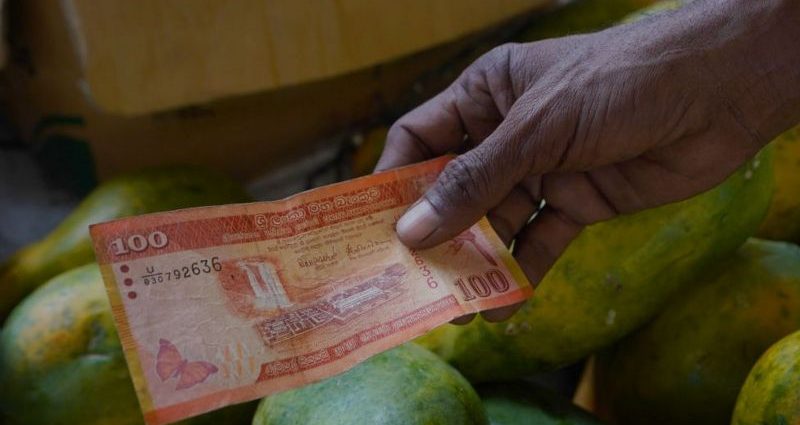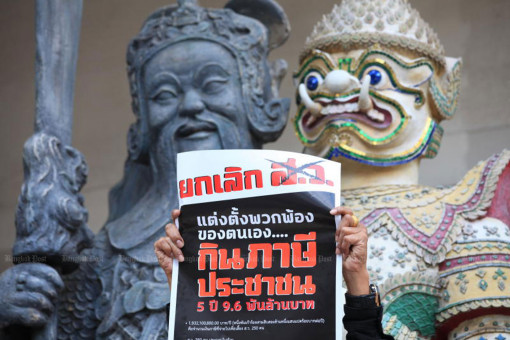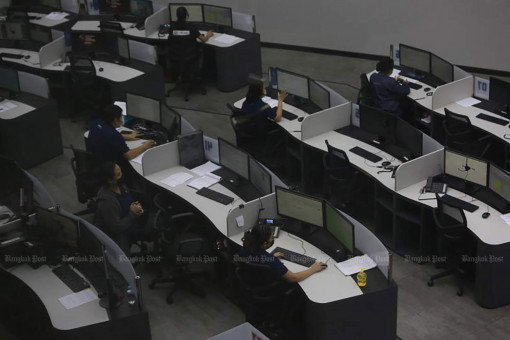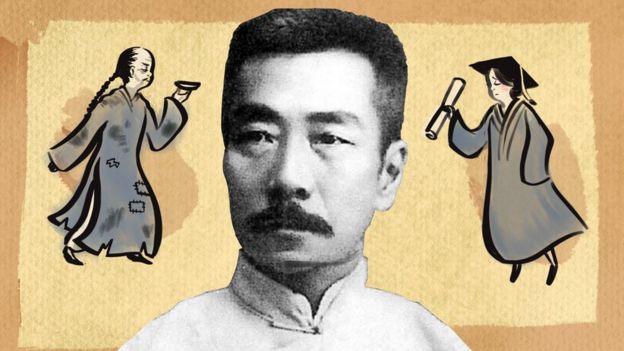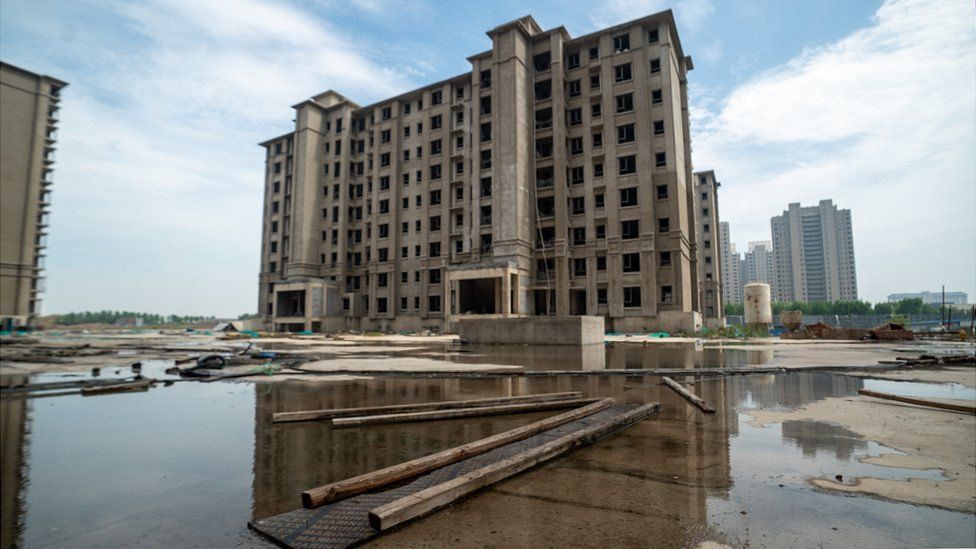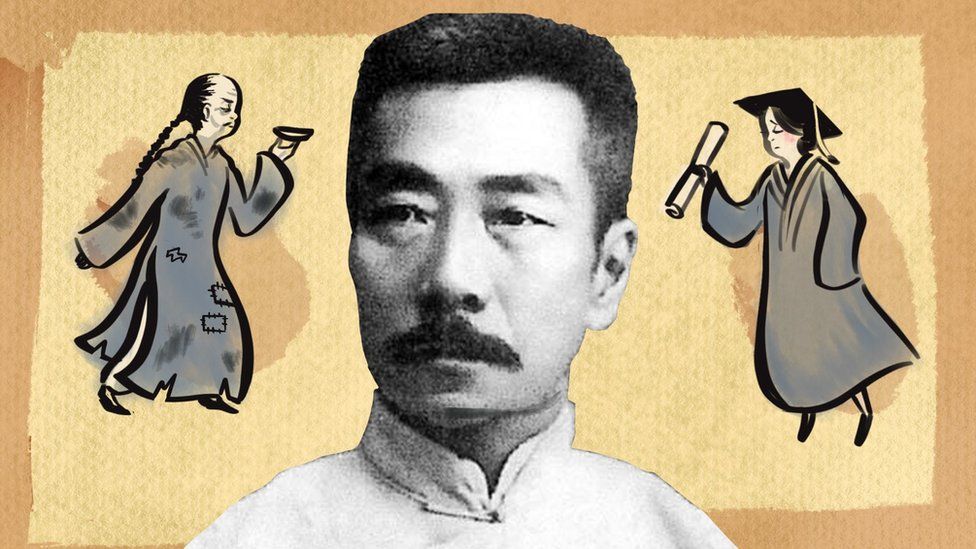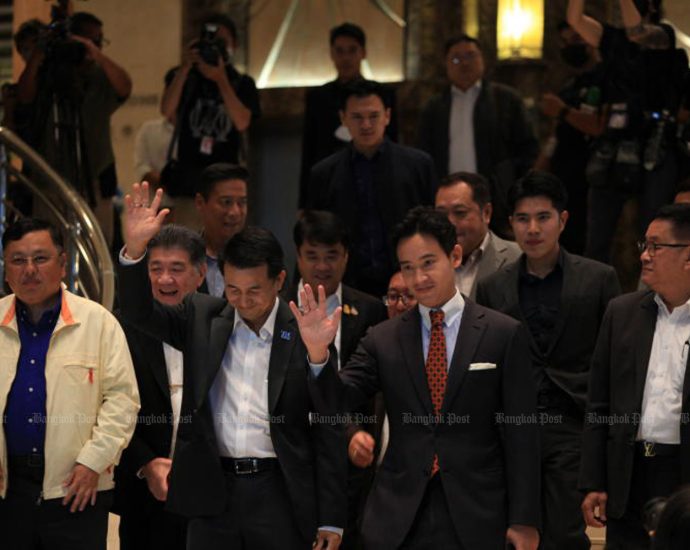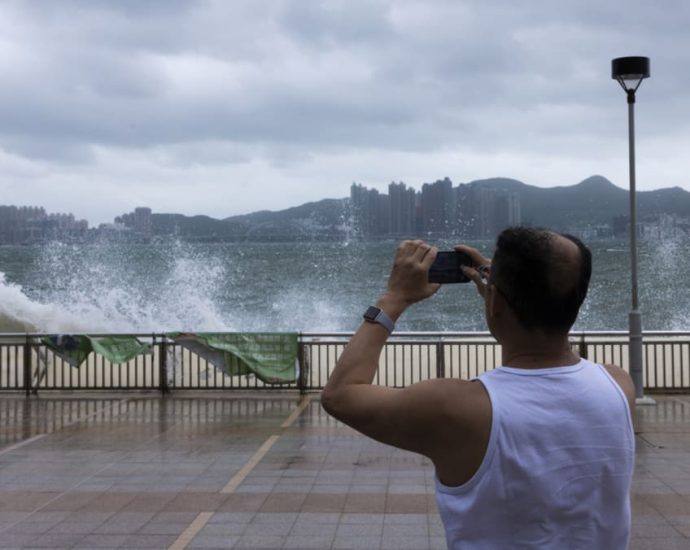Is the worst over for Sri Lanka’s economic crisis?
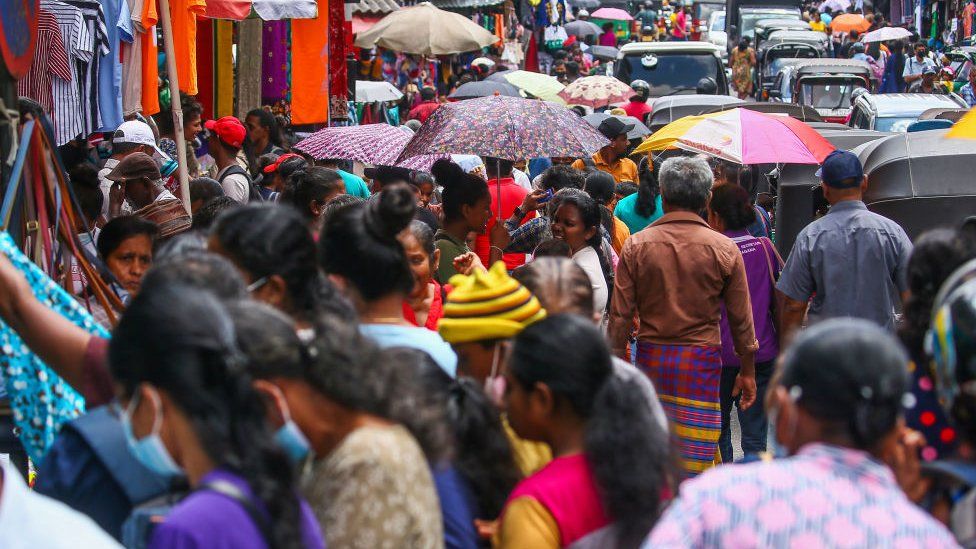 Getty Images
Getty ImagesAt first glance, life in Sri Lanka’s financial capital Colombo looks deceptively normal.
Roads are packed with traffic, public spaces and restaurants are full of both locals and tourists, while shops are bustling.
It is hard to imagine that just a year ago, this was a country struggling with massive shortages after it ran out of foreign currency.
With no money to buy fuel, roads were empty with even public transport at a standstill. Sri Lanka had to go back to pandemic-era measures such as online classes and working from home. But even this was not practical because of power cuts – some of which went on for up to 13 hours a day.
Food, medicine and other essentials were also in short supply, exacerbating the crisis. People had to stand in such long queues in the brutal heat, that at least 16 people – mainly the elderly – died.
But now, just a year later, food, fuel and medicine are available again, offices, schools and factories are all open, and public transport is back up and running.
Restaurants, especially high-end ones, are bustling.
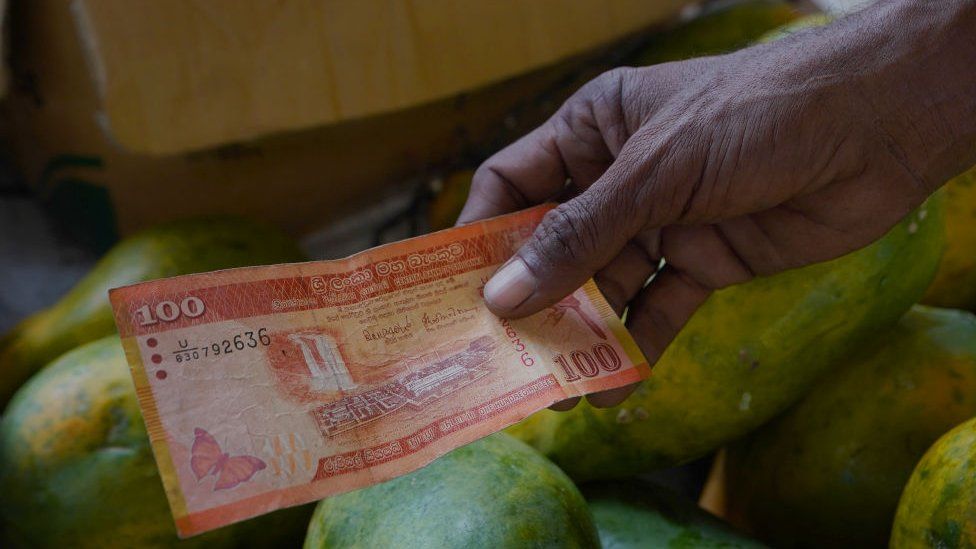
“Last year this time I was on the verge of selling my restaurant. We had to close for a few days as the shortage of fuel meant no customers were coming. But now footfall has gone up nearly 70%,” said Chathura Ekanayake who runs a fine dining restaurant in Colombo.
The country’s main source of foreign currencies – tourism – is also witnessing a revival. The industry has recorded a 30% jump in revenue from the previous year.
“The recovery has been magical for us. Last year we didn’t even know if the country would survive”, said Hiran Cooray, CEO of Jetwings Symphony, a leading travel and hospitality player in Sri Lanka.
Despite these good news stories, Sri Lanka’s economy is still in a precarious place.
The country still has more than $80bn (£61.1bn) of debt – both foreign and domestic. In the worst of the crisis last year, the country defaulted on its foreign debt for the first time in its history.
Ranil Wickremesinghe who took charge as President after widespread protests saw then-ruler Gotabaya Rajapaksa resign, has managed to secure a lifeline of $2.9bn from the International Monetary Fund (IMF).
This has been crucial to opening other funding channels and easing shortages, but the money came with strict economic and governance policy reforms. The country is now seeking to restructure terms of its debt payments with both foreign and domestic lenders, as mandated by the IMF.
The main focus has been on restructuring its $36bn of foreign debt. This includes more than $7bn of loans from China, Sri Lanka’s largest bilateral creditor.
However, it is the restructuring of domestic debt that is likely to have a much bigger impact on the Sri Lankan people. Domestic borrowing accounts for around 50% of the country’s total debt. Sri Lanka’s cabinet recently approved a domestic debt restructuring proposal, but it has drawn massive criticism as it aims to cut workers’ pensions, while banks will not be affected. There have been protests against the proposals in Colombo.
It highlights that while life may seem to have returned to normal, in reality people are still struggling.
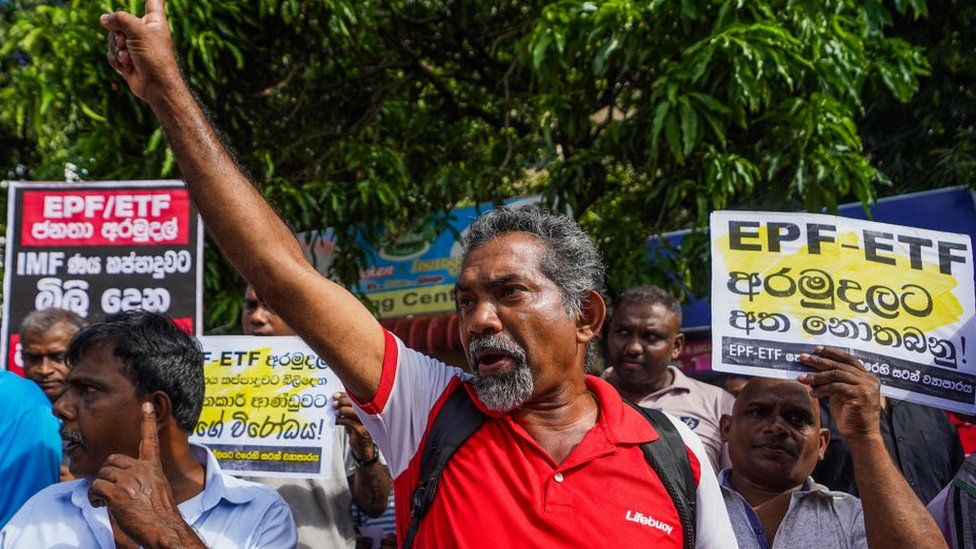
Essentials are available, but unaffordable for many. Things are more expensive than ever before. Almost half of all Sri Lankan families spend about 70% of their household income on food alone. And prices of food, clothing and housing are continuing to rise.
To add to the burden, income tax has been hiked to as much as 36% and subsidies on everything from food to household bills have been removed.
One area where this has had a huge impact is electricity bills, which have soared by 65% after the subsidy was removed.
“Many families from the middle class have now slipped below the poverty line,” said Malathy Knight, a senior economist with private think tank Verite Research.
And according to the World Bank, this is likely to continue for a while.
“Poverty is projected to remain above 25% in the next few years due to the multiple risks to households’ livelihoods,” it said in a report. The organisation has extended a $700m loan to Sri Lanka for budgetary support, including $200m for the poor and vulnerable.
This is a dramatic fall for a country that was long held up as an economic success story and had one of the highest average incomes in South Asia. The quality of its infrastructure, its free public health and education systems and its high levels of social development have all been held in high regard.
So how did things get so bad?
The government blamed the crisis on the Covid pandemic, which badly affected tourism. However, although the pandemic was a factor, disastrous economic policies were more to blame. Populist moves like big tax cuts in 2019 cost the government $1.4bn in annual revenues. And a move to ban imports of chemical fertilisers in 2021 caused a domestic food shortage.
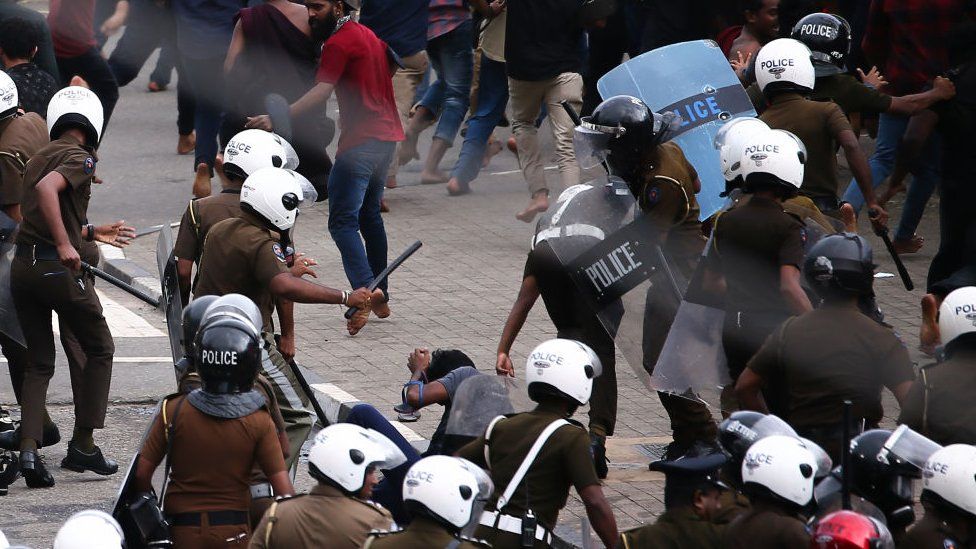
In order to cut expenses further the government has proposed privatising state-owned enterprises like Sri Lankan Airlines, Sri Lankan Insurance Corporation and Sri Lanka Telecom. This has triggered a fresh wave of protests – this time by trade unions.
“The government should not put the burden of the reforms on the salaried class and middle class who are already affected by the economic crisis,” said Anupa Nandula, the Vice President of the Ceylon Bank Employees Union.
Mr Nandula and his union participated in a recent demonstration against the proposal to privatise the Sri Lankan Insurance Corporation. He believes privatisation will lead to massive job losses and further burden the working class.
Ever since last year’s demonstrations were violently broken up, Sri Lankan authorities have been using force – such as tear gas, water cannon and even beating protesters. But experts warn that this is not a tactic that can work.
Rather than using force, the government needs to be transparent and explain that reshaping the economy will be tough, says Bhavani Fonseka, a constitutional lawyer working with Centre for Policy Alternatives.
“I think people since the crisis has happened have gotten used to a harder lifestyle. But in the absence of information coming, in the absence of answers being given, there is growing uncertainty and fear that we will go back to a crisis point.”
Group seeks recognition of public will
PUBLISHED : 18 Jul 2023 at 06:18

Forty pro-democracy organisations, non-governmental organisations (NGOs), and civil society groups on Monday issued a joint declaration demanding parliament respect the result of the general election on May 14.
The joint declaration given to the media demanded the Senate recognise the public support for the Move Forward Party and back its leader to assume the role of prime minister.
It also urged the cancellation of Section 272 to remove the Senate’s right to co-elect the prime minister, as well as negate changes made to the electoral system by the Constitution Drafting Assembly of Thailand.
On July 13, the eight coalition parties designated Move Forward Party (MFP) leader Pita Limjaroenrat as their sole prime minister candidate following the MFP’s victory on May 14.
However, in the vote to select a new prime minister, Mr Pita received 324 votes in favour, 182 against, and 199 abstentions in the final tally among the 705 members participating, which fell short of the 375 votes he needed to take office.
Mr Pita received just 13 votes in favour from senators.
The declaration issued by pro-democracy groups said that the Senate had abused its authority by ignoring public consensus and violated Section 159 of the constitution regarding the endorsement of a prime minister.
The groups also decried the fact that the Senate was not appointed with public input or subject to public approval, having been appointed under Section 272 in the temporary provisions of the 2017 Constitution, written by the now-defunct coup engineer, the National Council for Peace and Order (NCPO).
Among the organisations to endorse the statement were the Union for Civil Liberty, Campaign for Popular Democracy, P-Net, the Pridi Banomyong Institute and the Thai Women’s Movement for Reform (WeMove).
Australia’s accidental icon – how Kerr became face of a nation


Sign up for notifications to the latest Insight features via the BBC Sport app and find the most recent in the series here.
A 12-year-old Sam Kerr didn’t know it at the time, but she was about to make a choice that would change football.
She had been playing Australian rules football. And loving it.
Her brother Daniel, 10 years older, was the star of Perth’s West Coast Eagles. But her days with the oval ball were numbered. As the boys she played alongside got bigger, the action got more physical. She would come back from matches with black eyes or a swollen nose.
At 12 years old, the teams went single-sex. She couldn’t keep playing with her old friends. It was the end of one journey, but the start of another; one that has made her one of the greatest women’s players of all time.
“I wouldn’t say she loved soccer at first,” her mother Roxanne told BBC World Service’s World Football. “Because we as a family are so AFL [Australian rules], it was really upsetting for her not to be able to play that with the boys, so at the beginning she didn’t really take her soccer very seriously.”
But the rest of the sport soon had to take her seriously.
Aged only 15, Kerr won her first cap for the Australian national team, the Matildas.
Now 29, she will lead her country as captain at a home World Cup, seeking to take them past the quarter-finals for the first time.
If she does, she may just achieve her dream of replicating the feat of her idol, Sydney 2000 gold medallist Cathy Freeman, and “stop the nation”.
This is the story of how Kerr developed into one of the world’s best strikers and an Australian icon.

For most players, their first international cap is a treasured moment – an explosive culmination of hard work and pride.
But Kerr’s turned out to be an awkward whimper, rather than a bang.
When Scotsman Tom Sermanni sent Kerr out in the 76th minute of a friendly against Italy in Canberra in 2009, none of her friends and family were there to watch her.
It wasn’t though any indifference. It was the lack of an invitation.
“I never realised how big the moment was and I always say if I could redo one part of my career, it would be my first cap,” Kerr admitted in 2021.
“She didn’t tell us when she was going to make her Australia debut, she just told us she was going to camp, so we didn’t go,” Kerr’s mother Roxanne said.
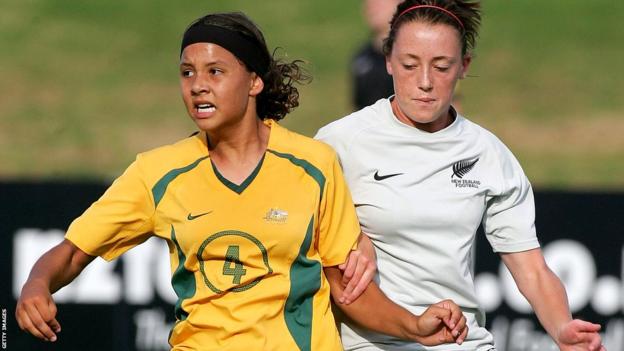
They would have been there. Kerr’s parents spent her childhood ferrying her across Perth and beyond as her career progressed. The Kerrs were a family united in their passion for sport and competition.
The heritage goes way back. One of Kerr’s grandfathers was a featherweight boxer, another was a state-level Australian rules player. A grandmother played basketball. A great uncle won horse racing’s Melbourne Cup in 1966. And her father Roger and eldest brother Daniel were dedicated to Aussie rules.
Their garden was a parched track for backyard cricket in the summer. If they weren’t playing some kind of sport, they were spending hours glued to the TV watching it. Roger fondly remembers watching every second of cricket’s Boxing Day tests, sheltering inside from Perth’s hot dry summers.
“She and Daniel are very close,” Roxanne said. “They always talked about sport, any sport. They both love boxing, watching the tennis, the cricket, the racing cars, whatever is on.
“We are still competitive. We are forever playing something – whether is it coits or jenga in the garden – and the whole house is screaming over who is going to win or lose. It is in her blood.”
Kerr’s first senior international goal arrived around a year after her debut for Australia, deflecting a clearance into the net from close range
That was the first of 63 goals and counting for the Matildas. The Kerr celebration, which made its debut that day, has since become a familiar sight.
“She didn’t quite execute what she delivers now,” remembered team-mate Kate Gill of Kerr’s cartwheel-backflip combo.
“But I just remember the way she landed and the grin on her face as she collapsed to the ground. It was a pretty special moment.”
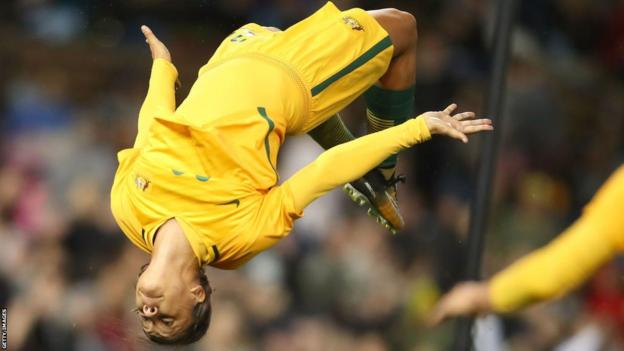
Coach Sermanni had no qualms about bringing Kerr into the senior squad at such a young age.
“She had the raw materials. My first impression was power and energy,” he said.
Sermanni said her sense of honesty and fun and “devil-may-care attitude” arrived fully developed.
“I think in 2010, we went to play Germany away,” said Sermanni.
“I remember coming in at half-time and Sam just said, deadpan, ‘that’s the hardest game I’ve ever played’. So she just had that kind of innocent honesty.”
In club football, the goals initially came as more of a trickle than a flood, until a tactical masterstroke.
At the start of her professional career, the obvious place to put Kerr – blisteringly fast, but still a naive teenager – was on the wing. And that is where she was stationed for Perth Glory.
However when Bobby Despotovski was appointed as the W-League side’s coach in 2014, he sensed she could do more centrally.
“I thought to myself, she’s unused, being so far out of the box, and so far from the goal,” he told BBC Sport.
“Why don’t we actually put her closer to the goal as an out-and-out striker and see what happens?”
After some injury setbacks, the goals started to flow.
“I said all along that she’s going to be one of the best footballers in the world,” Despotovski said. “And nobody believed me.”
There was a lot more to Kerr’s development at Perth Glory – she also had to work on mental toughness.
While Daniel was one of Australia’s leading AFL players, he was also frequently involved in off-field controversies, often featuring alcohol and violence.
“At an early age, when her brother was playing AFL very well, he was in the media for good reasons,” Despotovski said.
“But later on, in her teen years, it was for bad reasons.
“I think she needed to develop mentally to block that out and continue on her path. It’s full testament to her mental state.
“I remember numerous times and she was very, very frustrated.
“We would have long chats about the frustration and how she can channel it and use it as a springboard to be much better.”
Kerr worked on properly channelling her mood during games, and instead of making endless runs for passes that didn’t come, she focused on fewer, more dangerous darts into the box.
“When we gave her the captaincy, you could see her stepping up to the next level,” Despotovski said.
“She would lead the team from the first minute until the end of the game every time.
“She took everyone under her wing and she led by example on and off the park.”

Seeking out more games and a higher standard of competition, Kerr trod a common path for Australian footballers, playing back-to-back seasons by switching from Australia to the United States.
The lack of overlap in the fixture lists made for a gruelling schedule, but scope for rapid improvement.
When Western New York Flash coach Aaran Lines was negotiating with Sam’s agent to bring her over to the club in 2013, he expected the 19-year-old to be shy. Instead he found the opposite.
“She had amazing energy, she lights up the locker room,” he said.
“I remember her athleticism, her ability to jump, her timing. With her Aussie rules background, she would seem to float in the air.
“The kid could jump like a kangaroo. Her ability to get on crosses and do untrainable stuff, it was just in her personality and understanding of the game.”
She played alongside established superstars of the game – such as Abby Wambach and Carli Lloyd – at Western New York Flash and shone.
But in late 2014 she suffered a serious knee injury, requiring surgery.
With the 2015 World Cup approaching, Kerr was in a race against time to prove her fitness.
Four weeks after going under the knife, she went to the Australian Institute of Sport in Canberra to work with strength and conditioning coach Aaron Holt.
He had seven weeks to get her up and running.
“I thought it was going to be pretty tough to get her there. The first two weeks, she was on crutches,” Holt explained on BBC World Service’s documentary Sam Kerr: The making of a Matilda.
“I had to constantly adjust her training programme, because she just loved the work – you would tell her how many, and she would step up every time.”
On the very last day, with no time to spare, Kerr completed rehabilitation and was selected for the World Cup.
“There was so much more work to do after being selected, but that tournament spring-boarded her career,” he said.
“If she hadn’t made it, who knows where she might be today.”
On the back of a successful World Cup campaign in the Matildas reached the last eight, Kerr joined New York-based Sky Blue FC, now known as NY Gotham FC.
She became the NWSL’s top scorer at 23 and won the Golden Boot and Most Valuable Player award in her second full season.
At the end of 2019, amid interest from several clubs, Kerr announced she would join Chelsea, becoming one of the best-paid women in the game.
She was the Women’s Super League’s top scorer in each of her first two full seasons in London. Individual recognition has followed; she has been both club and league player of the year, and was third in the past two Ballon d’Or polls.
Her consistency is matched by a habit of turning up when it matters most.
Several people the BBC spoke to described Kerr as a “big-game player”.
She has played in the past three FA Cup finals, scoring five goals, with the Blues winning a hat-trick of trophies.
“Whenever we need her to score a goal she is always there,” said Chelsea winger Guro Reiten.
“If Sam’s not scoring goals, I’m not looking at her, I’m looking at me – what am I not doing right?
“Sam tells me every day: ‘Between my hairline and my eyebrows, that’s where I want it!’ It’s true.”
Every time Kerr returns to Australia, she is swarmed by crowd of fans wearing her number 20 shirt.
The Australian government awarded Kerr the Young Australian of the Year award in 2018, and asked her to carry the national flag at King Charles’ coronation earlier this year.
Kerr initially intended to turn down the invitation to Westminster Abbey, as it clashed with training at Chelsea.
Coach Emma Hayes found out from someone else, gave Kerr the day off and told her she was “crazy” for almost opting out of the event.
“She was pretty chuffed to be sitting next to Harry and thought King Charles was cool,” Roxanne said.
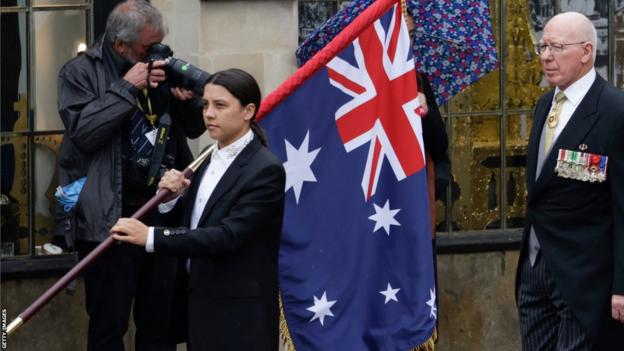
She wasn’t just representing Australia, however.
Kerr, whose father Roger was born in Kolkata to an Indian mother and English father, has expressed enthusiasm about going to India and connecting with her roots.
“It was pretty hard as a young fellow with dark skin in Australia, but now it’s a completely different world and multiculturalism is everywhere,” Kerr’s father Roger said.
“Everyone’s equal to Sam – doesn’t matter what race you are as long as you’re a good person.”
Kerr was praised for her leadership in February when the Matildas wore rainbow numbers on their jerseys for a Sydney game that coincided with the city hosting World Pride.
“Everyone should feel comfortable in whatever skin they’re in, whoever they want to be, whoever they want to love,” said Kerr,
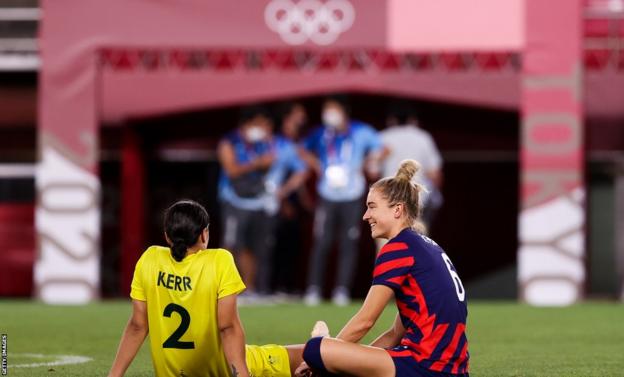
Nicola Williams, who coached Kerr at Perth Glory, said the striker’s competitive streak never compromised her personality and humanity.
“She was just humble on the field, ” said Williams. “She was nice to be around. But she wanted to win, there was no doubt about that.
“I think probably how her mum was, just allowed her to be passionate about sport and have fun doing it.”
Marianna Tabain played football with Kerr in Perth and at a national level from age 12. She is now a teacher and sees the impact her former team-mate is having on Australia’s youth.
“There are boys in my class that are searching her up on Google,” she told BBC Sport.
“And that was unheard of; you never searched for a female footballer.
“Now a lot of people know who Sam is and they want to be her.”
By the time Australia begin their campaign on Thursday against the Republic of Ireland, a lot more people will be aware who Kerr is and what she represents.
“She is so excited about a home World Cup – who would have every thought we would get one here, it is really good,” mother Roxanne said.
Wherever her team’s World Cup run ends, and whether she manages to emulate Freeman and take gold or not, Kerr has secured her place as as one of Australia’s greatest athletes.
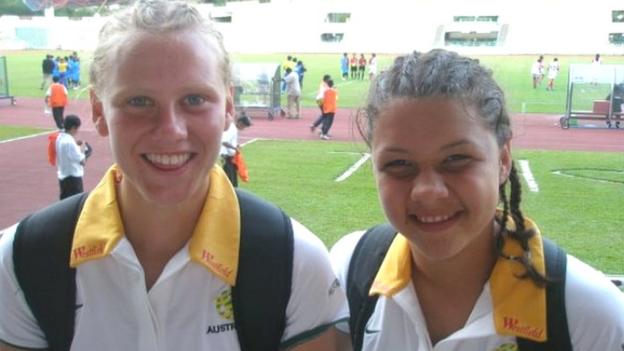
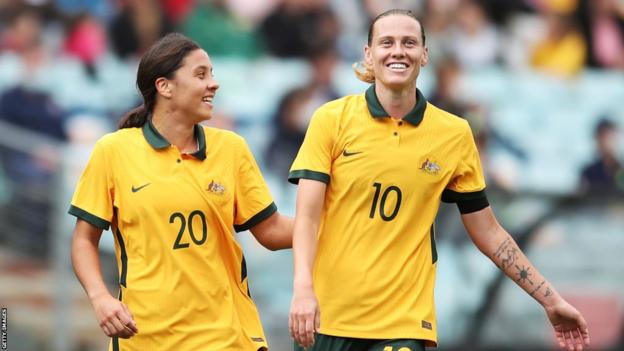
Graft claimed in police hotline bid
PUBLISHED : 18 Jul 2023 at 06:00

The Royal Thai Police (RTP) is to review a complaint regarding the bidding for the rights to operate its 191 emergency hotline.
The complaint was presented to the RTP on Monday by activist Srisuwan Janya and Yoswaris Chuklom, alias Jeng Dokjik, who chairs the Ruam Jai Rak Chart (United Hearts for the Nation) group and alleged that the process had been rigged.
Mr Srisuwan said the RTP run project is worth over 7 billion baht and is to be financed by the National Broadcasting and Telecommunications Commission.
Approved by the cabinet on Dec 25, 2018, the project was modelled on hotline systems already in operation in other countries where distress calls are routed to a central hub which coordinates with local services in order to respond to emergencies more efficiently.
The project involves building the infrastructure and installing telecommunication networks.
Mr Srisuwan alleged the terms of reference (ToR) had been written to favour one particular firm in the bidding, which has now been cancelled twice on suspicion of corruption.
The project also requires that three companies install telecommunication networks, which Mr Srisuwan claimed was another cause for concern as it could lead to confusion between different emergency response teams.
Despite the project having gone through three national police chiefs, little headway has been made.
On July 10, the Comptroller’s General Department opened a fresh bid calling for firms to tender their offers on Aug 10.
RTP spokesman Pol Lt Gen Archayon Kraithong said the complaint against the project was received, and the RTP office will gather the documentary evidence needed to review the allegations.
Mr Yoswaris said the owner of the company allegedly favoured by the ToR has close connections with a high-profile politician and senior RTP officers.
Burnt out or jobless – meet China’s ‘full-time children’
 Getty Images
Getty ImagesOverworked and exhausted, Julie gave up her job as a game developer in Beijing this April to be a “full-time daughter”.
The 29-year-old now spends her day washing dishes, preparing meals for her parents, and doing other household chores. Julie’s parents pay for most of her daily expenses but she has refused their offer of a monthly wage of 2,000 yuan ($280; £215).
Her current priority, after all, is to get a breather from the 16-hour days in her previous job. “I lived like a walking corpse,” she said.
Gruelling work hours and a dismal job market are forcing young Chinese to make unusual choices.
Julie is part of a growing cohort that call themselves “full-time children” who are driven back to the comfort of home either because they are craving a break from their exhausting work lives, or they simply cannot find a job.
Young Chinese, who had always been told that the hard work they put in studying and chasing degrees would pay off, are now feeling defeated and trapped.
More than one in five of those between the ages of 16 and 24 are jobless in China, and the youth unemployment rate has been reaching new highs. According to official figures released on Monday, that figure now stands at 21.3% – the highest since authorities began publishing data in 2018. The figure does not account for the rural labour market.
Many of the so-called “full-time children” say they intend to stay at home only temporarily – they see it is a period to relax, reflect and find better jobs. But that’s easier said than done.
Julie has sent more than 40 job applications to recruiters in the past two weeks – but she has only got two interview calls. “It was hard to find a job before I quit. After I quit, it got even harder,” she says.
Burnt out, jobless or stuck?
The burnout driving working adults to become “full-time children” is not entirely surprising given China’s notoriously poor work-life balance – work culture in the country is often referred to as the so-called “996” – where people consider it a norm to work 9am to 9pm, six days a week.
Chen Dudu, also a “full-time daughter”, left her job in real estate earlier this year as she felt increasingly burnt out and under-valued. The 27-year-old said she “barely had anything left” after paying for rent.
When she was back at her parent’s home in southern China, Ms Chen said she “lived the life of a retiree” but anxiety has been creeping up on her. She says she kept hearing two distinct voices in her head: “One is saying, it’s rare to have this leisure, so just enjoy the moment. The other is urging me to think about what to do next.”
Ms Chen, who has since started her own business, said: “If that went on for a long time, I would indeed have become a parasite.”

Jack Zheng, who recently left Chinese tech giant Tencent, said he had to respond to nearly 7,000 work-related text messages outside work hours each day – the 32-year-old calls this “invisible overtime work” because while it was expected it was not compensated. He finally quit after the stress from work left him with a bad case of folliculitis, a skin disorder caused by inflamed hair follicles.
Mr Zheng has since found a better job, but he said people around him are not as fortunate. Many also face the so-called “curse of 35”, a widely prevalent belief in China that employers are less willing to hire workers older than 35 – instead they prefer young people who are “less expensive”.
This double-edged sword of age discrimination and bleak job opportunities is a challenge for those in their mid-30s who have a mortgage over their heads, or are thinking of starting a family.
The despair is no less among university students, so much so that some have resorted to failing their examinations just to delay graduation.
In recent weeks, Chinese social media has been flooded with atypical graduation photographs that speak to fresh graduates’ disillusionment. Some show young people “lying flat” in graduation gowns, faces covered with mortarboards; others show them holding their graduation certificates above dustbins, ready to bin them.
University was once an elite pursuit in China. But between 2012 and 2022 enrolment rates rose from 30% to 59.6% as more and more young people came to see college degrees as a ticket to better opportunities in a competitive job market. But aspirations have given away to disappointment as the job market tanks. Experts say youth unemployment is likely to worsen as a record 11.6 million fresh gradates enter the market.
“The situation is quite bad. People are tired and many are trying to opt out. There is a lot of despair,” said Miriam Wickertsheim, director at Shanghai-based recruitment firm Direct HR.
China’s slower-than-expected economic recovery post Covid is a key reason for the high unemployment, says Bruce Pang, chief economist for Greater China at Jones Lang LaSalle.
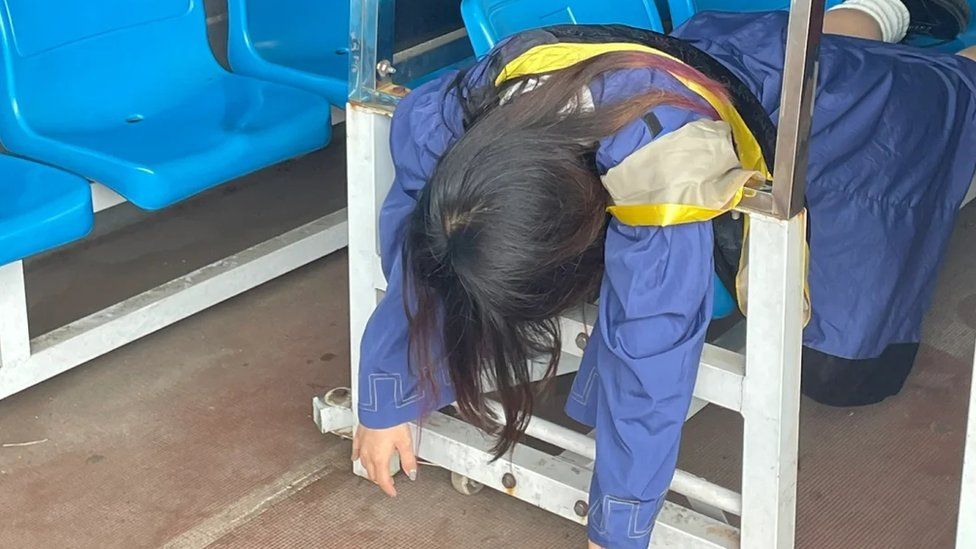
Some employers are also less willing to hire “blank paper” graduates who have less work experience than their predecessors because of sustained Covid lockdowns, Mr Pang said.
China’s recent crackdowns on industries popular among young Chinese professionals have also choked the job market. Regulations against major tech companies, restrictions on the tutoring industry and and a ban on foreign investment in private education have all led to job cuts.
‘Slow employment’
While China’s government is well aware of these problems, it has tried to downplay them.
In May, Chinese leader Xi Jinping was quoted on the front page of the Chinese Communist Party’s People’s Daily newspaper, urging young people to “eat bitterness”, a Mandarin expression that means to endure hardship.
State-run media, meanwhile, has taken it upon itself to redefine unemployment. An editorial last week in the state-run Economic Daily used the term “slow employment” – while some young Chinese are indeed unemployed, the paper said, others have “actively opted for slow employment”.
The origin of the phrase is unclear but a 2018 article by China Youth Daily said that a growing number of university graduates were taking their time to find jobs, many choosing instead to travel or take up short teaching stints – this, the Chinese were told, was “slow employment”.
This time the definition includes those who haven’t found a job, or choose to continue education, learn new skills or take a gap year. No matter how hard the job market is, the paper advised people, they must “take action and work hard” – and as long as they do that, they don’t need to worry about being jobless.
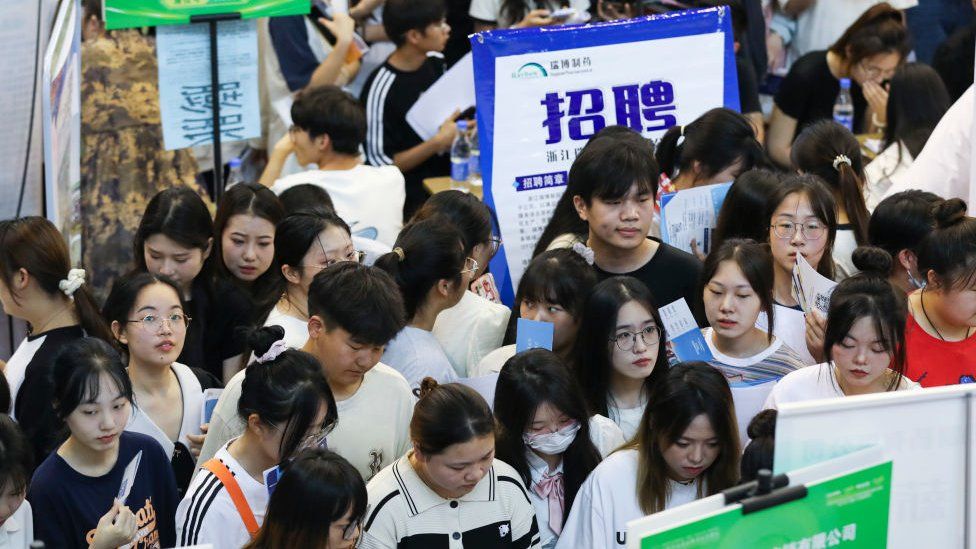
Given the current state of the job market, however, the phrase and the advice has been far from well-received – some marvelled at their government’s “refusal to acknowledge the unemployment situation”, while others reacted with sarcasm.
“Chinese writing is so profound,” wrote one user on China’s Twitter-like service Weibo. “We are obviously unemployed, yet [officials have] invented the term ‘slow employment’. How slow would it be? A few months or a few years?”
Another user on Xiaohongshu, China’s equivalent of Instagram, said the term “pushes the responsibility on the young people all of a sudden”.
“Based on this explanation, the employment rate during The Great Depression in the US in the late 1920s should be 100%, as most people were in slow employment. What a way to resolve a global problem!”
“Unemployment is unemployment. We should call it what it is,” said Nie Riming, a researcher at the Shanghai Institute of Finance and Law.
“There may indeed be young people who would like a sabbatical before starting their next job, but I think the vast majority of those unemployed today are desperate for a job but cannot find one.”
Additional reporting by Fan Wang in Singapore
Related Topics
-
-
14 June 2021
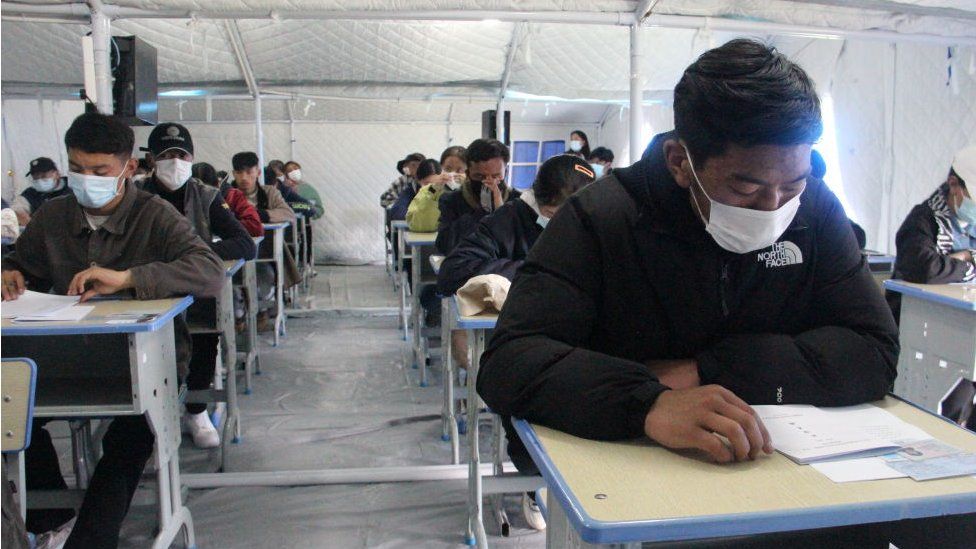
-
Court to decide on EC petition
PUBLISHED : 18 Jul 2023 at 05:45

The Constitutional Court is to decide on Wednesday whether to hear a petition submitted last week by the Election Commission (EC) seeking a court ruling on whether Move Forward Party (MFP) leader Pita Limjaroenrat’s MP status is now considered invalid, according to a source.
Another joint sitting of the House of Representatives and the Senate will also take take place to select Thailand’s next prime minister.
Last week’s prime ministerial vote saw Mr Pita fail to muster enough votes to become prime minister. He is accused in a number of petitions submitted to the EC to have been ineligible to stand in the election because he held 42,000 shares in iTV Plc, which is believed by some to still operate as a media company.
Former election commissioner Somchai Srisutthiyakorn, meanwhile, posted on his Facebook page on Monday his own analysis of what will happen next with Mr Pita’s alleged ineligibility case.
He expected the judges to convene Wednesday morning to decide whether or not to proceed with the EC petition.
At the same time, parliament would convene to decide who will become the country’s new prime minister but would spend the first half of the day debating parliament’s Regulation No.41, which deals with the submission of a repeat motion, according to Mr Somchai.
He was referring to an observation made by some senators that to nominate Mr Pita for a fresh prime ministerial vote was submitting a repeat motion which is prohibited under the regulation.
Before midday, Mr Somchai said, he expects the court to agree to hear the EC’s petition and suspend Mr Pita as an MP while the court looks at the case.
This will mean Mr Pita won’t be able to act as an MP but will remain the MFP’s sole prime ministerial candidate, said Mr Somchai.
Jade Donavanik, a legal scholar and a former constitution drafter, however, said he didn’t expect to see the court decide immediately when meeting on Wednesday to suspend Mr Pita as an MP.
He said the judges will need time to contemplate the EC’s petition and evidence submitted with the court before ruling if there is a need to suspend Mr Pita in case court decides to hear the case.
Srettha ‘ready to be PM’, looks to revive economy

Srettha Thavisin, one of the Pheu Thai Party’s three prime minister candidates, has declared himself ready to become prime minister if he wins the trust of his party to take on the top job.
Mr Srettha was responding to questions asked amid rumours that he would be nominated for a new prime ministerial vote if Move Forward Party (MFP) leader Pita Limjaroenrat is unable to be re-nominated as a prime ministerial candidate for the joint sitting in parliament tomorrow.
“We at the Pheu Thai Party have discussed this matter for four months, and if I weren’t ready for the job, I would not have been named one of three prime ministerial candidates by the party,” he said.
However, he said a more pressing issue was to speed up the formation of a new coalition government and kick-start economic stimulus measures.
Many people are truly troubled by the slowing economy, Mr Srettha said, adding that Pheu Thai’s main responsibility was to take care of this urgent problem.
He said that free trade agreement talks and a feared shift of foreign investments from Thailand to neighbouring countries are among the priority issues that must be addressed promptly.
“I’m always a team player, and we [the Pheu Thai Party] are democratic. Whatever decision is reached by the party board, I will respect it,” he said.
Mr Srettha, however, declined to comment on the possibility of Pheu Thai switching sides and joining a rival bloc of parties, including Bhumjaithai and the Palang Pracharath Party, to form a new government, as has been speculated.
A Pheu Thai Party source said in the event Mr Pita is unable to be re-nominated for a prime ministerial vote or fails to garner enough votes in the joint sitting, Pheu Thai will first propose to defer the vote till next week, when it will then nominate Mr Srettha for prime minister.
Meanwhile, Deputy Pheu Thai leader Phumtham Wechayachai has urged the MFP to stay focused on how to succeed in forming a new coalition rather than being distracted by its latest campaign seeking to amend Section 272 of the constitution to terminate the Senate’s right to vote in a prime ministerial selection.
The lawmakers have tried at least six times to “switch off” the senators, but they could not muster sufficient support in parliament to push the amendment motion through.
Such a motion requires the approval of at least one-third of senators, or 84 senators, to pass the motion.
“Mr Pita couldn’t even muster 64 votes from senators in last week’s prime minister vote,” Mr Phumtham said.
He counts on Mr Pita to clarify when and how he intends to move the country forward amid the ongoing wrangle over the prime ministerial vote. The tourism sector, for instance, is eager to know when the new government will take office. The sector is concerned Thailand could be affected by the political uncertainty, Mr Phumtham said.
Thousands evacuated as Typhoon Talim pummels southern China, Vietnam
BEIJING: A quarter million people were evacuated in southern China and Vietnam before a major typhoon roared ashore late on Monday (Jul 17) bringing fierce winds and rain and forcing the cancellation of hundreds of flights and trains. The China Meteorological Administration said typhoon Talim, the fourth typhoon of theContinue Reading
ONCB finds drugs bound for Australia

PUBLISHED : 18 Jul 2023 at 05:14
The Office of the Narcotics Control Board (ONCB) has so far this year foiled 35 drug smuggling cases at airports and seaports, leading to the confiscation of 973.4 kilogrammes of methamphetamine and 70.7kg of heroin bound for Australia.
Wichai Chaimongkol, secretary-general of the ONCB, on Monday said the Airport Interdiction Task Force (AITF) and the Seaport Interdiction Task Force (SITF) closely cooperated on these transnational criminal cases.
ONCB director Prin Mekhanan was assigned to lead an operations team consisting of members of the ONCB, the AITF and the SITF to conduct crackdowns, he said.
The anti-trafficking operations were conducted by the Customs Department, the Narcotics Suppression Bureau, the Armed Forces Security Centre and the ONCB, Mr Wichai said.
In one case, an investigation had found that drugs would be concealed in parcels for international shipping, he said.
Mr Wichai said that on July 14, the team and staff from an international shipping service found two A3-sized paper boxes with “Inkjet Paper” printed on top. The crew found that the boxes contained four bags of heroin wrapped in aluminium foil, weighing about 1.2kg, he said.
Mr Wichai said the parcels were bound for Australia. The ONCB, therefore, contacted the Australian Federal Police (AFP) in Thailand to investigate a suspected network behind the smuggling, he said.
He said that the evidence could be traced back to traffickers in Thailand and Australia who previously attempted to ship drugs via airports and sea ports.
The drugs were concealed in parcels registered with an international shipping service, bound for Australia, he said.
He said the ONCB had tracked down key figures of a drug trafficking business in Thailand, leading to the AFP to sequester many assets owned by drug trafficking suspects in Australia.
Commentary: More than parent care leave, employers must provide supportive culture for working caregivers

There needs to be better communication among management, human resources and employees on the best approach. Employers concerned about potential abuse of the leave system may ask employees (at least initially) to provide documentation, such as a medical certificate or an appointment chit.
Depending on employee demographic and needs, management may decide to offer more parent care leave as part of corporate benefits or grant more leave on an ad-hoc basis. Companies can review these policies every few years to make beneficial adjustments.
Overall, companies will benefit by promoting a flexible work culture with parent or family care in mind. Parent care leave could even make employers stand out in a tight labour market if more workers expect to take on some caregiving.
SOCIETAL NORMS AND FLEXIBLE WORK ARRANGEMENTS
It is a caring workplace culture, not parent care leave, that needs to be mandated. But can it?
The way forward in balancing business interests with caregiving responsibilities is one Singapore has to chart itself, though overseas examples can provide some ideas. In Australia, employees are entitled to 10 paid days of personal leave that encompasses sick leave and carer’s leave. In Germany, legislation provides for up to 10 days unpaid leave in case of a care emergency.
However, the societal norms are different. In these countries, seniors typically retire on their own or live in retirement homes, often far away from their children, using their savings and pension benefits to fund living expenses.

